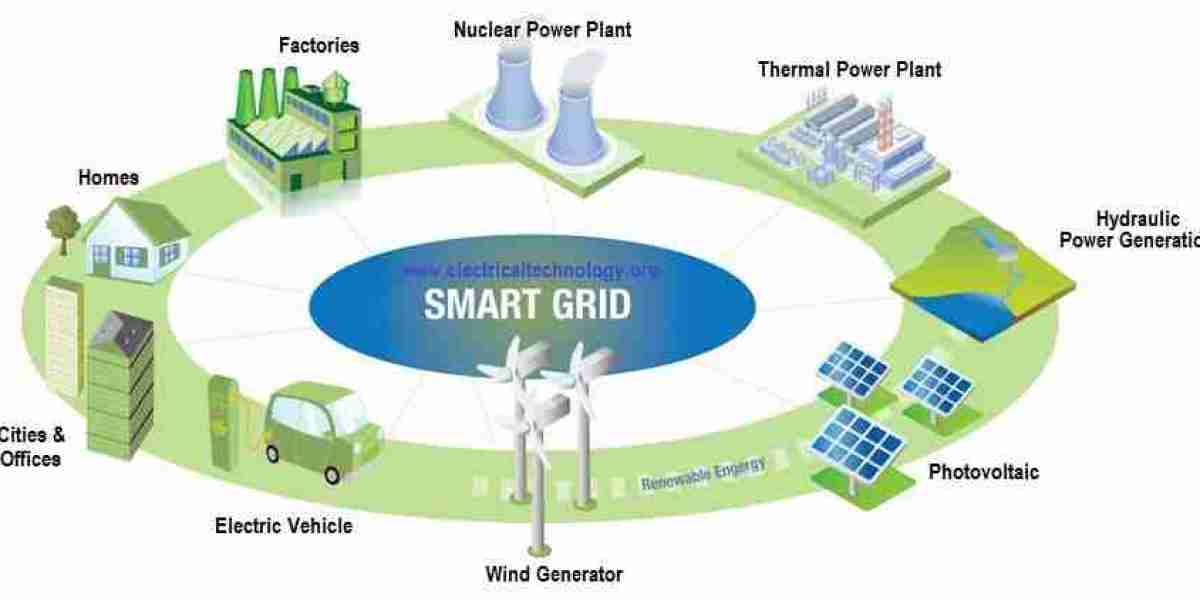The Smart Grid Sensor Market is experiencing rapid expansion due to the global shift toward more intelligent and efficient power infrastructure. Smart grid sensors are integral components of modern energy systems, enabling real-time monitoring, automated control, and fault detection across electricity networks. As nations pursue digital transformation and carbon neutrality, the adoption of smart grid technologies has intensified, making sensor technology a pivotal element in this evolution.
Market Dynamics and Drivers
The growing demand for energy efficiency, grid reliability, and sustainability has fueled the development of smart grids. Sensors play a crucial role in facilitating the two-way communication and intelligent analytics that smart grids require. These devices measure variables such as voltage, current, temperature, and frequency, allowing utilities to optimize operations and respond proactively to grid anomalies.
Governments worldwide are actively investing in grid modernization programs. Initiatives like the U.S. Department of Energy’s Grid Modernization Initiative and Europe’s Horizon 2020 are accelerating the deployment of smart grid technologies. As these programs roll out, the demand for advanced sensor technologies rises, creating substantial opportunities for market growth.
Additionally, the integration of renewable energy sources, such as solar and wind, introduces variability into the grid. Smart sensors help manage these fluctuations by providing real-time data, thus improving grid stability. This functionality is essential for maintaining power quality and avoiding outages.
Technological Advancements and Innovation
Recent advancements in IoT, AI, and cloud computing have revolutionized smart grid sensors. Modern sensors are now more compact, cost-effective, and capable of handling large volumes of data. The emergence of edge computing allows data processing to occur near the source, reducing latency and enhancing system responsiveness.
Wireless sensor networks (WSNs) have also gained traction, as they reduce installation costs and improve scalability. These innovations enable real-time condition monitoring, fault detection, and predictive maintenance, leading to improved asset performance and reduced operational costs.
Cybersecurity is another focus area, with manufacturers incorporating encryption and secure communication protocols to safeguard critical infrastructure. As grids become more interconnected, ensuring the security of data and control systems becomes paramount.
Market Segmentation
The Smart Grid Sensor Market can be segmented by sensor type, application, and region:
By Type: Voltage/temperature sensors, phasor measurement units (PMUs), and fault current indicators.
By Application: Transmission and distribution lines, substations, and smart meters.
By Region: North America, Europe, Asia-Pacific, Latin America, and the Middle East & Africa.
North America currently leads the market due to early adoption and significant investments in grid modernization. However, Asia-Pacific is expected to witness the highest growth rate, driven by rapid urbanization, industrialization, and government-led smart city initiatives in countries like China, India, and South Korea.
Competitive Landscape
Key players in the Smart Grid Sensor Market include ABB Ltd., Siemens AG, General Electric, Schneider Electric, and Itron Inc. These companies focus on R&D, partnerships, and acquisitions to enhance their technological capabilities and expand their global footprint.
Startups and niche players are also entering the market with specialized solutions. The competitive environment encourages continuous innovation, ensuring a steady flow of advanced products tailored to evolving grid requirements.
Challenges and Future Outlook
Despite promising growth, the market faces several challenges. High initial costs and the complexity of integrating sensors into legacy infrastructure can deter utilities from adopting these solutions. Additionally, data privacy concerns and regulatory uncertainty in developing regions may hinder market penetration.
Nevertheless, the long-term outlook for the Smart Grid Sensor Market remains highly optimistic. The growing importance of decarbonization, decentralization, and digitalization in the energy sector ensures sustained demand for smart sensors. As utility companies embrace data-driven decision-making, the role of smart sensors will become even more critical.
In the coming years, the convergence of AI, big data, and machine learning with sensor technology is expected to redefine the grid management landscape. Enhanced grid visibility, proactive maintenance, and real-time analytics will become standard features, supporting a more resilient, flexible, and efficient energy ecosystem.




